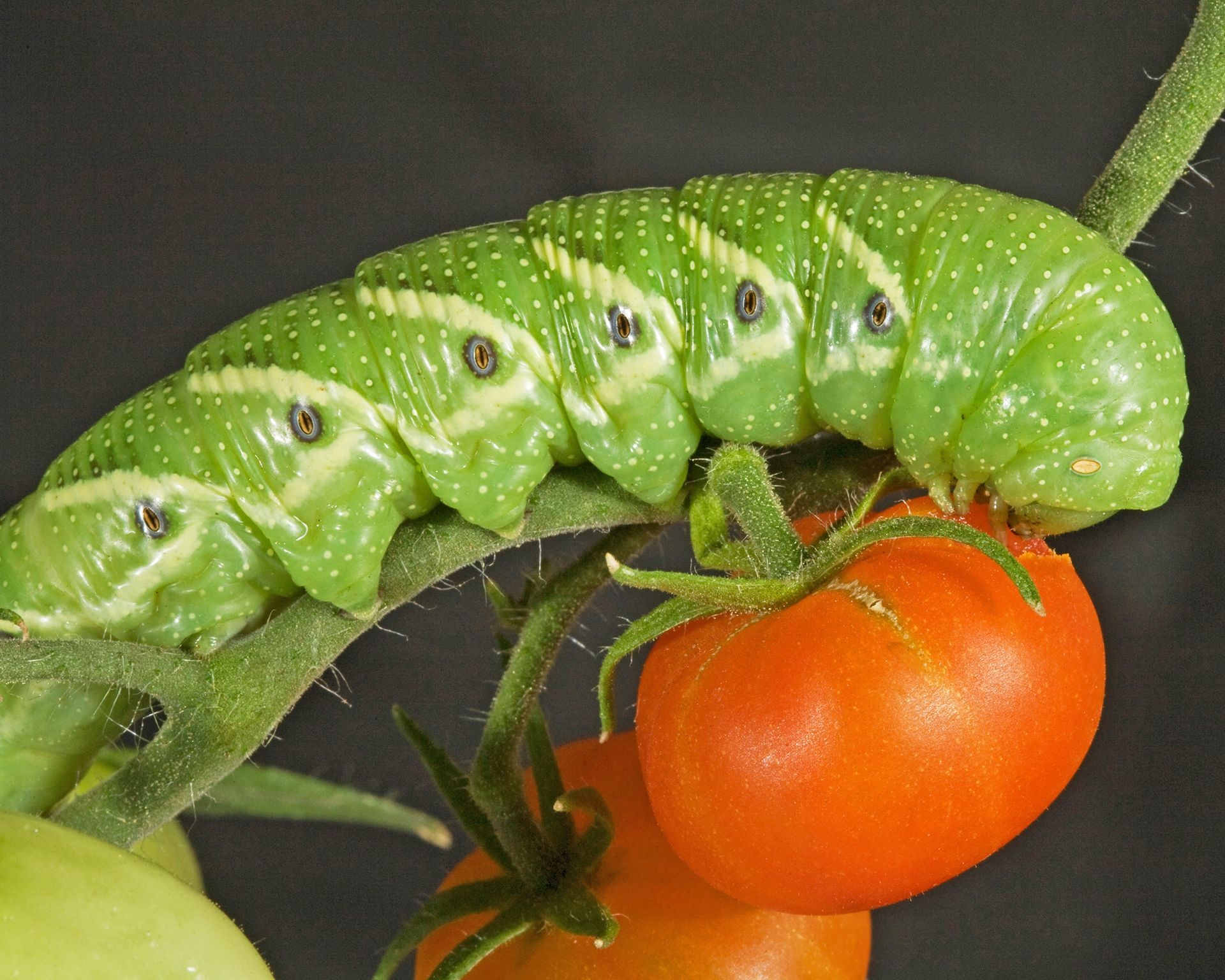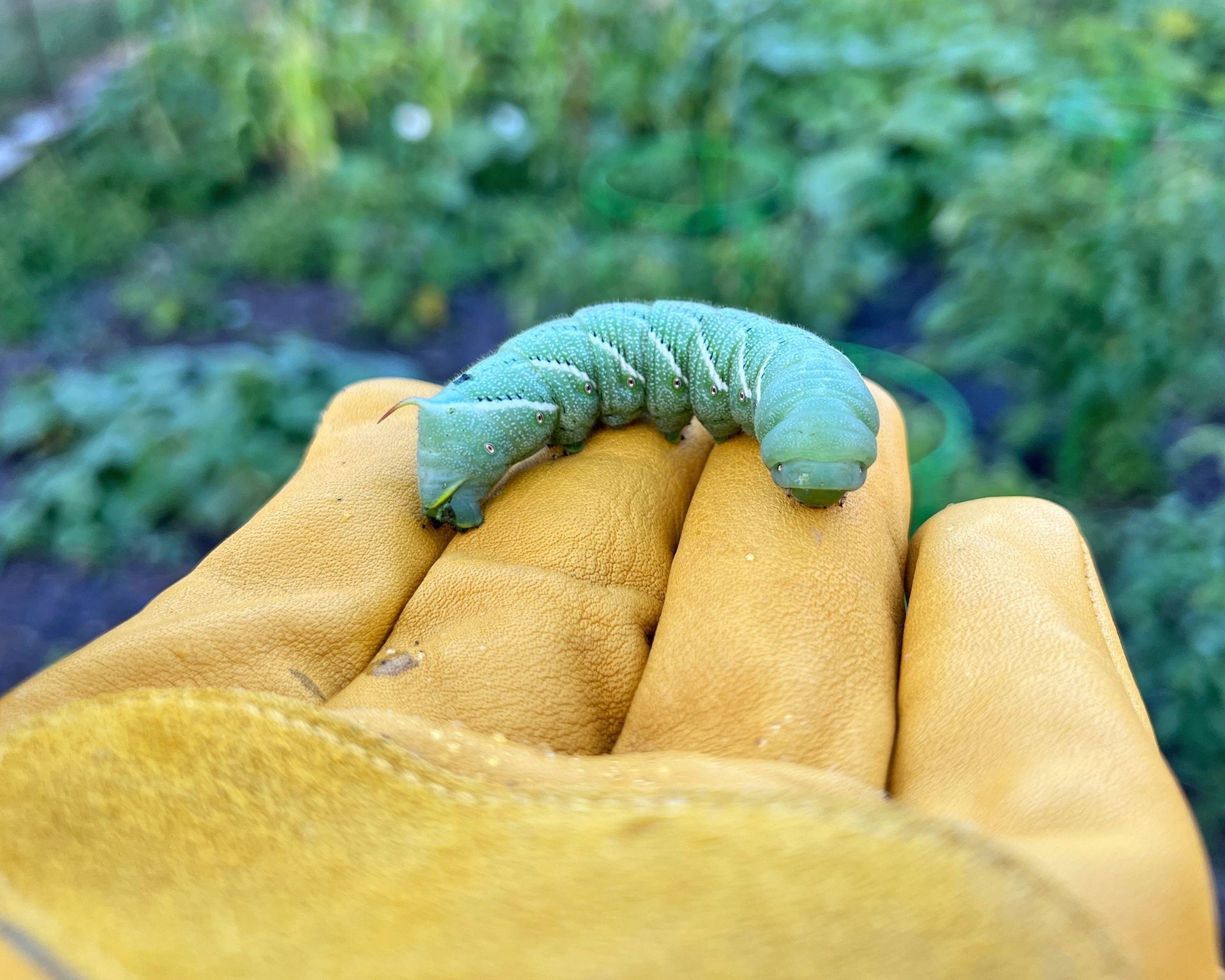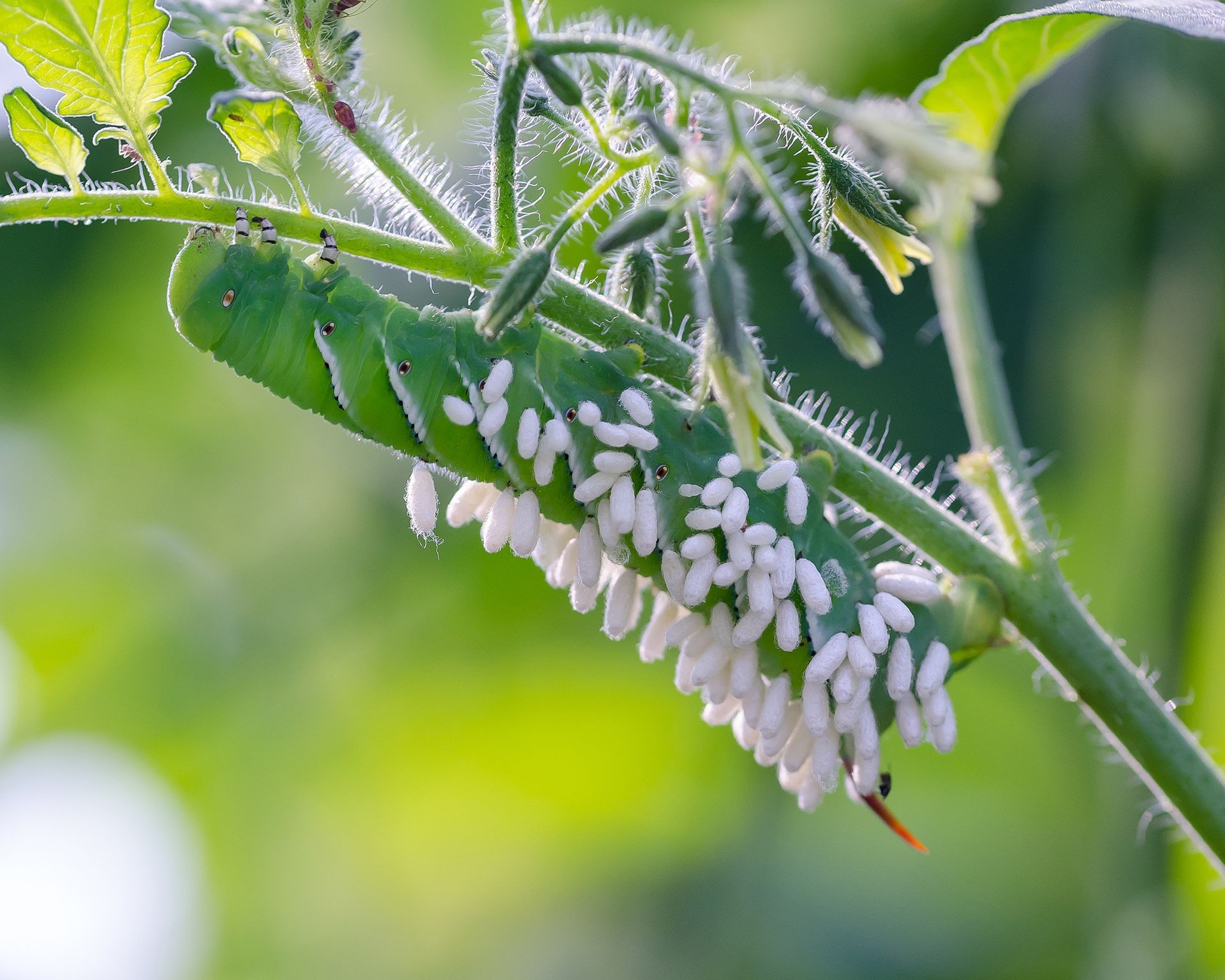No products in the cart.
NEWS
Natural Ways to Defeat Tomato Hornworms in Your Garden
If you’ve spotted large, destructive green caterpillars making quick work of your prized tomato plants, you’re likely battling the infamous tomato hornworm or its close relative, the tobacco hornworm. These substantial larvae are notorious garden pests, capable of stripping foliage from tomatoes, peppers, eggplants, and even potatoes in a remarkably short time. Addressing an infestation swiftly is crucial to protecting your vegetable garden and ensuring a healthy, abundant harvest.
Tomato hornworms are the larval stage of the five-spotted hawkmoth (Manduca quinquemaculata), typically found more frequently in northern regions. Tobacco hornworms, larvae of the Carolina sphinx moth (Manduca sexta), are more common in the southern United States. Despite their regional prevalence, their destructive habits are universal. Managing these pests effectively is a fundamental step towards cultivating thriving, productive tomato plants and other vulnerable vegetables.
Identifying the Garden Invaders
Despite their impressive size, potentially reaching up to 4 inches in length, tomato hornworms possess a remarkable ability to camouflage themselves among plant foliage. Often, the first indication of their presence is the visible damage they leave behind: severely stripped leaves, large irregular holes in foliage, missing flowers, or even damage to developing fruit. Another tell-tale sign is the discovery of their dark, pellet-like droppings scattered on leaves below where they are feeding.
While both tomato and tobacco hornworms are large and green with a prominent “horn” at their rear end, subtle differences can help distinguish them:
- Tomato Hornworms: Feature bright green bodies adorned with diagonal white stripes that form a series of V-shapes pointing towards the head. Their horn is dark green to black.
- Tobacco Hornworms: Also bright green, but their white stripes are diagonal lines without the distinct V-shape pattern. Their horn is typically reddish in color.
While other large caterpillars might visit your garden, such as the offspring of the hummingbird moth, they generally do not target tomato plants with the same voracity as hornworms. Spotting one hornworm usually suggests that others are nearby, making regular inspection essential.
 Large green tomato hornworm caterpillar feeding on a tomato plant leaf
Large green tomato hornworm caterpillar feeding on a tomato plant leaf
The Case for Natural Hornworm Control
Hawkmoths and sphinx moths, the adult forms of these caterpillars, are fascinating nighttime pollinators. However, they are not endangered species, and their larval stage can cause significant agricultural damage. When tomato or tobacco hornworms threaten your crops, intervention is necessary to save your plants. Opting for natural control methods is often the best approach. Chemical insecticides can potentially introduce harmful substances into your plants and soil, disrupt the delicate balance of your garden’s ecosystem, and kill beneficial insects that actually help with pest control. Acting early is paramount; vigilant monitoring of your plants allows for prompt, effective intervention using natural strategies.
Below, we explore some of the most effective natural solutions for immediately addressing active hornworm infestations and implementing preventative measures to discourage their return.
Proven Natural Strategies to Manage Tomato Hornworms
Fortunately, gardeners have several effective, environmentally friendly tools at their disposal to combat tomato hornworms and protect their harvest.
Hand-Picking: The Most Direct Method
While it might require getting a little closer to the action than some prefer, physically removing tomato hornworms by hand is arguably the most effective way to quickly control an active infestation. Hornworms are large, making them easy to spot once you know what to look for, and they do not bite. Wearing gardening gloves can help if you find the idea unpleasant.
Make it a routine to inspect your plants daily. The late evening is often the best time for this task, as hornworms tend to be most active then. Using a flashlight can help illuminate the caterpillars, making their camouflage less effective. Carefully examine all parts of the plant, paying special attention to the undersides of leaves and along stems where they like to cling and feed.
When you locate a hornworm, simply pick it off the plant. The most common disposal method is dropping them into a bucket filled with soapy water, which causes them to drown. Alternatively, if you keep chickens, hornworms are a protein-rich treat they will eagerly consume.
 Gardener wearing gloves carefully holding a large tobacco hornworm caterpillar
Gardener wearing gloves carefully holding a large tobacco hornworm caterpillar
Repelling with Homemade Sprays
If hand-picking isn’t feasible or preferred, a homemade spray can serve as a deterrent and potentially kill hornworms on contact. Cayenne pepper is a common ingredient known to be highly unpleasant to these pests.
A simple recipe involves mixing about 1 cup of water with a teaspoon of liquid dish soap and a quarter teaspoon of cayenne pepper in a spray bottle. Shake well before each use to keep ingredients mixed. Generously spray the foliage of affected plants, ensuring you cover both the top and undersides of leaves. You’ll likely need to reapply this spray several times a week, especially after rain. For a simpler application, you can also lightly dust dry cayenne pepper directly onto the affected plant parts.
Utilizing Beneficial Bacteria: Bacillus thuringiensis (Bt)
When dealing with a significant hornworm problem, introducing Bacillus thuringiensis (Bt) can be a highly effective natural intervention. Bt is a naturally occurring soil bacterium that is permitted in organic farming. It contains a specific protein crystal that is toxic only to certain insects, primarily leaf and needle-feeding caterpillars, when ingested. Once a hornworm consumes plant material treated with Bt, the protein crystal paralyzes their digestive system. The caterpillar stops feeding within hours and starves to death over a few days.
One of the key benefits of using Bt is its targeted action; it is harmless to humans, pets, and most beneficial insects like bees, ladybugs, and lacewings. However, it is important to note that Bt will also affect other butterfly and moth larvae, so use it judiciously only on plants actively infested with destructive caterpillars like hornworms. Bt is usually applied as a spray and is most effective when caterpillars are young and haven’t yet caused extensive damage. Consistent monitoring for early signs of infestation is key to maximizing Bt’s effectiveness.
 Tobacco hornworm covered in white oval structures, which are parasitic braconid wasp pupae
Tobacco hornworm covered in white oval structures, which are parasitic braconid wasp pupae
Attracting Natural Predators
Enlisting the help of beneficial predatory insects is a cornerstone of a long-term, sustainable pest management strategy. These helpful creatures act as natural pest control agents, significantly reducing hornworm populations over time. While not an instant fix, encouraging them is vital for a balanced garden ecosystem.
Braconid wasps are particularly notable for their role in hornworm control. These tiny wasps lay their eggs just under the skin of a hornworm caterpillar. As the wasp larvae hatch, they feed internally on the caterpillar, eventually chewing their way out to pupate on the hornworm’s back, forming distinctive white, rice-like cocoons. If you encounter a hornworm covered in these white structures, resist the urge to remove it. Leave it undisturbed, as the developing wasps will soon emerge, and the weakened hornworm will die. The new adult wasps will then seek out other hornworms to parasitize, creating a natural control cycle.
Other beneficial insects like ladybugs and green lacewings also prey on young hornworm caterpillars or their eggs. These beneficials can often be purchased and released into your garden, or more sustainably, encouraged to visit by planting nectar and pollen-rich flowers. Plants such as alyssum, dill, yarrow, white clover, and marigolds are known attractants for a variety of beneficial insects.
Strategic Companion Planting
Integrating certain companion plants among your susceptible crops is an invaluable preventative measure against tomato hornworms and other common pests like thrips and aphids. Many companion plants emit strong scents from their foliage or flowers that confuse or repel harmful insects, while simultaneously attracting the beneficial insects you want in your garden.
Plants like borage, basil, marigolds, and nasturtiums are particularly effective deterrents when interplanted with tomatoes. Their presence can significantly reduce the likelihood of hornworm moths laying eggs on your vulnerable plants. Beyond pest control, companion planting offers additional benefits, such as improving soil health, attracting pollinators, and potentially even enhancing the flavor of your vegetables.
Cultivating a Resilient Garden
Successfully protecting your garden from tomato hornworms using natural methods is entirely achievable through a combination of vigilance, timely intervention, and fostering a healthy garden ecosystem. By regularly monitoring your plants, employing direct controls like hand-picking when necessary, utilizing targeted biological controls like Bt, and creating an environment that welcomes natural predators and deters pests through companion planting, you can safeguard your harvest without relying on synthetic chemicals.
A thriving, productive garden is one where natural processes are encouraged. Explore the range of natural gardening support products available at Biogarden.asia designed to help you cultivate robust, pest-resistant plants and enjoy abundant, healthy vegetables straight from your garden.



